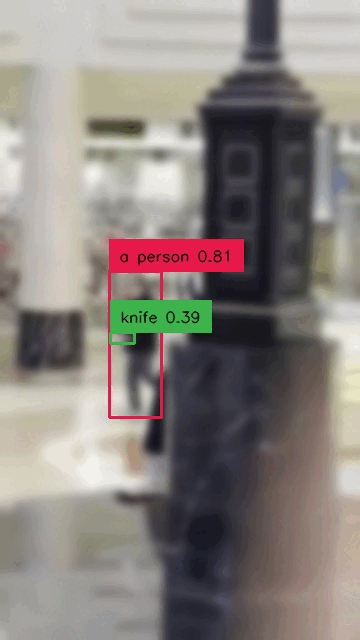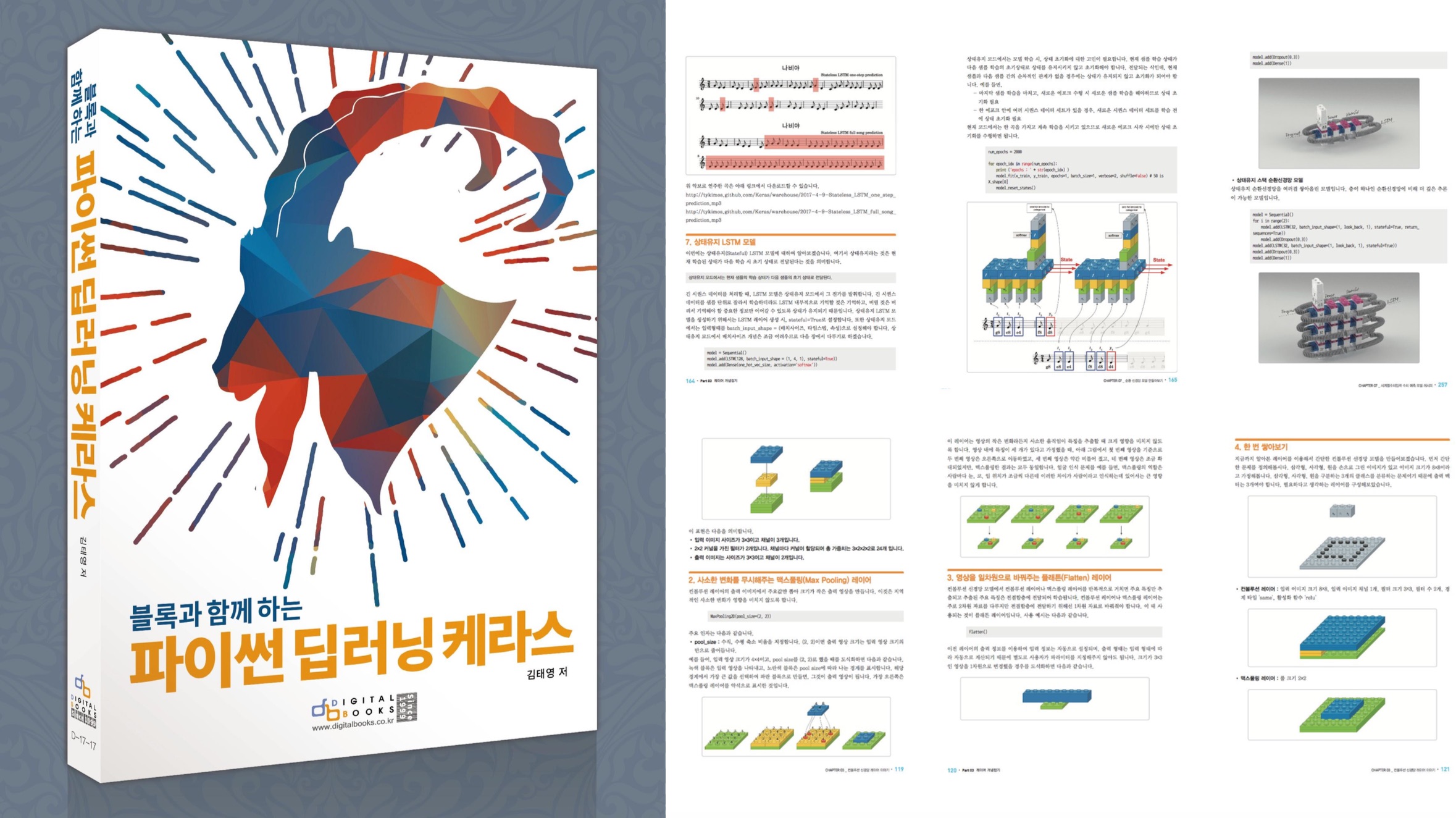AI로 흉기 검출 - Grounding Dino 활용
Grounding Dino를 이용한 흉기 검출
충격적인 서현역 흉기난동 사건이 발생했습니다. 이런 사건을 방지하거나 빨리 인지하려면 어떻게 해야할까 고민 중에, Grounding Dino를 활용하여 흉기를 검출하는 모델을 만들어봤습니다. Grounding Dino는 객체를 검출하고 그 객체에 대한 설명을 생성하는 작업을 수행하는 AI 모델입니다. 이번 프로젝트에서는 Grounding Dino를 사용하여 동영상의 각 프레임에서 흉기 객체를 검출하고, 그 결과를 분석하는 작업을 수행하였습니다.
흉기가 검출된 프레임만 모아서 움직이는 GIF로 만들어봤습니다.

전체 영상에서 검출 결과를 보시려면 아래 동영상을 참고하세요.
Grounding Dino 소개
Grounding DINO는 (이미지, 텍스트) 쌍을 입력으로 받는 AI 모델입니다. 이 모델은 이미지 내의 객체를 인식하고, 해당 객체에 대한 설명을 생성하는 작업을 수행합니다. 기본적으로 Grounding DINO는 이미지 내의 900개의 객체 상자를 출력합니다. 각 상자는 입력된 모든 단어에 대한 유사성 점수를 가지고 있습니다. 특정 임계값(box_threshold)보다 높은 최대 유사성을 가진 상자만을 선택하는 방식으로 작동합니다. 또한, 특정 임계값(text_threshold) 이상의 유사성을 가진 단어들을 예측 레이블로 추출합니다. 예를 들어, “두 마리의 개가 막대기를 가지고 있다”라는 문장에서 ‘개’에 해당하는 객체를 얻고 싶다면, ‘개’와 가장 높은 텍스트 유사성을 가진 상자를 최종 출력으로 선택할 수 있습니다.
흉기 검출 처리 과정
공식깃헙에서 제공하는 소스코드를 활용하여 아래 코드를 추가한 후 흉기 검출을 처리했습니다.
# 이미지 처리 함수
def process_image(image_path, model, text_prompt):
BOX_TRESHOLD = 0.35
TEXT_TRESHOLD = 0.25
image_source, image = load_image(image_path)
boxes, logits, phrases = predict(
model=model,
image=image,
caption=text_prompt,
box_threshold=BOX_TRESHOLD,
text_threshold=TEXT_TRESHOLD
)
# Apply Gaussian blur to the image_source
blurred_image = cv2.GaussianBlur(image_source, (25, 25), 0)
annotated_frame = annotate(image_source=blurred_image, boxes=boxes, logits=logits, phrases=phrases)
return annotated_frame, phrases
import os
import cv2
from tqdm import tqdm
import supervision as sv
import tempfile
text_prompt = "A person with a knife in their hand"
input_video_path = '/content/source_video.mp4'
output_video_path = '/content/output_video.mp4'
output_knife_path = '/content/output_knife'
output_no_knife_path = '/content/output'
# Create output directories if they don't exist
os.makedirs(output_knife_path, exist_ok=True)
os.makedirs(output_no_knife_path, exist_ok=True)
# 동영상 파일 읽기
cap = cv2.VideoCapture(input_video_path)
frame_count = int(cap.get(cv2.CAP_PROP_FRAME_COUNT))
# Get the video width/height
width = int(cap.get(cv2.CAP_PROP_FRAME_WIDTH))
height = int(cap.get(cv2.CAP_PROP_FRAME_HEIGHT))
# 동영상 파일 만들기
video = cv2.VideoWriter(output_video_path, cv2.VideoWriter_fourcc(*'mp4v'), 30, (width, height))
# 각 프레임에 대해
for _ in tqdm(range(frame_count)):
# Read the frame
ret, frame = cap.read()
# Save the frame to a temporary file
temp_filename = tempfile.mktemp(suffix='.jpg')
cv2.imwrite(temp_filename, frame)
# Process the image
processed_frame, phrases = process_image(temp_filename, model, text_prompt)
# Remove the temporary file
os.remove(temp_filename)
# 칼이 포함된 프레임 이미지
if 'knife' in phrases:
save_path = os.path.join(output_knife_path, f"frame_{_}.jpg")
# 칼이 포함되어 있지 않은 이미지
else:
save_path = os.path.join(output_no_knife_path, f"frame_{_}.jpg")
# 이미지 저장
cv2.imwrite(save_path, processed_frame)
# 동영상에 프레임 추가
video.write(processed_frame)
# 동영상 파일 닫기
video.release()
cap.release()
전체 소스 코드
전체 소스 코드는 아래에서 확인할 수 있습니다.
책 소개

[추천사]
- 하용호님, 카카오 데이터사이언티스트 - 뜬구름같은 딥러닝 이론을 블록이라는 손에 잡히는 실체로 만져가며 알 수 있게 하고, 구현의 어려움은 케라스라는 시를 읽듯이 읽어내려 갈 수 있는 라이브러리로 풀어준다.
- 이부일님, (주)인사아트마이닝 대표 - 여행에서도 좋은 가이드가 있으면 여행지에 대한 깊은 이해로 여행이 풍성해지듯이 이 책은 딥러닝이라는 분야를 여행할 사람들에 가장 훌륭한 가이드가 되리라고 자부할 수 있다. 이 책을 통하여 딥러닝에 대해 보지 못했던 것들이 보이고, 듣지 못했던 것들이 들리고, 말하지 못했던 것들이 말해지는 경험을 하게 될 것이다.
- 이활석님, 네이버 클로바팀 - 레고 블럭에 비유하여 누구나 이해할 수 있게 쉽게 설명해 놓은 이 책은 딥러닝의 입문 도서로서 제 역할을 다 하리라 믿습니다.
- 김진중님, 야놀자 Head of STL - 복잡했던 머릿속이 맑고 깨끗해지는 효과가 있습니다.
- 이태영님, 신한은행 디지털 전략부 AI LAB - 기존의 텐서플로우를 활용했던 분들에게 바라볼 수 있는 관점의 전환점을 줄 수 있는 Mild Stone과 같은 책이다.
- 전태균님, 쎄트렉아이 - 케라스의 특징인 단순함, 확장성, 재사용성을 눈으로 쉽게 보여주기 위해 친절하게 정리된 내용이라 생각합니다.
- 유재준님, 카이스트 - 바로 적용해보고 싶지만 어디부터 시작할지 모를 때 최선의 선택입니다.